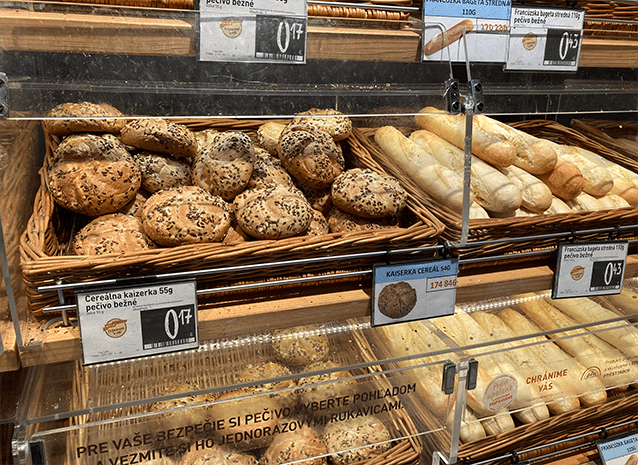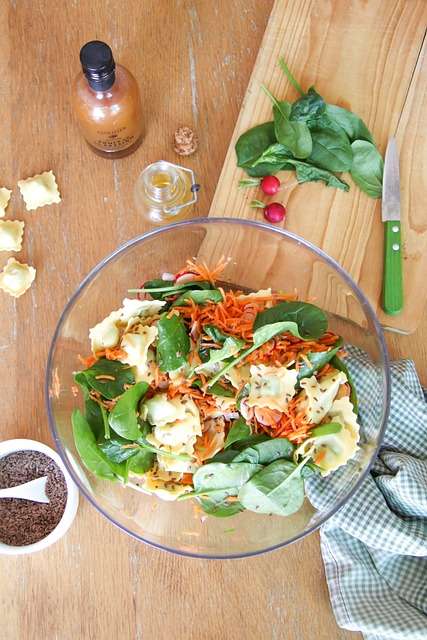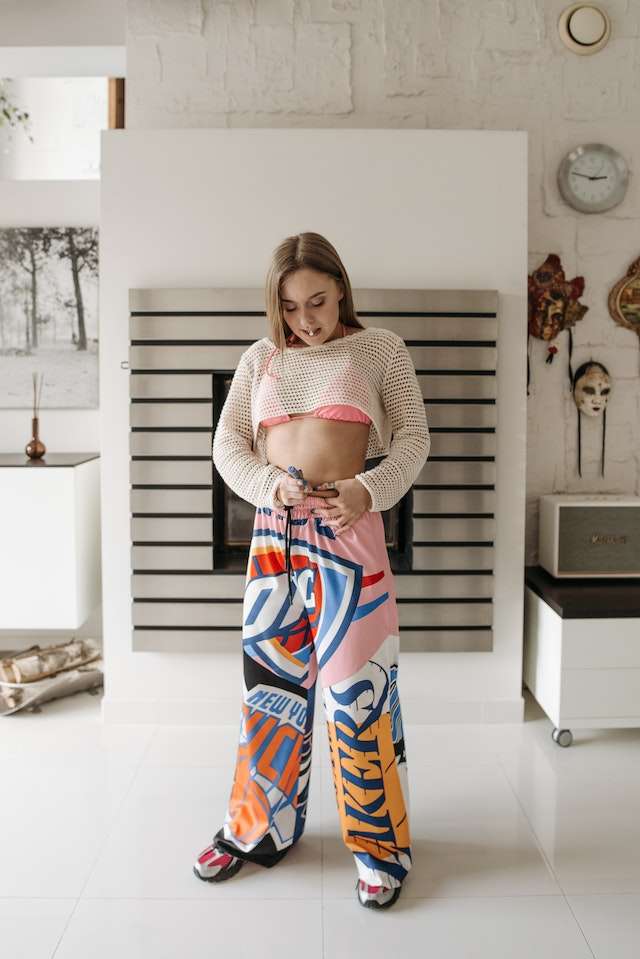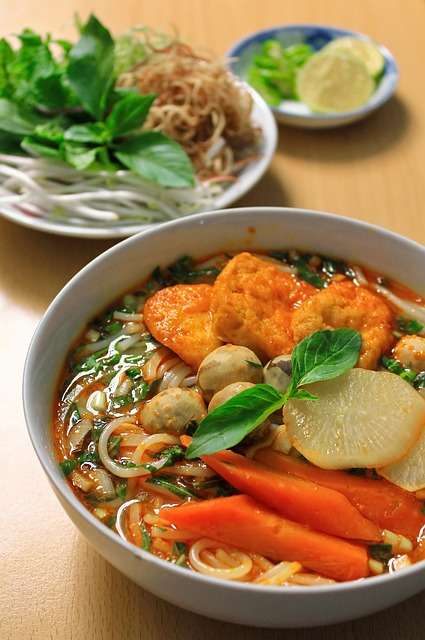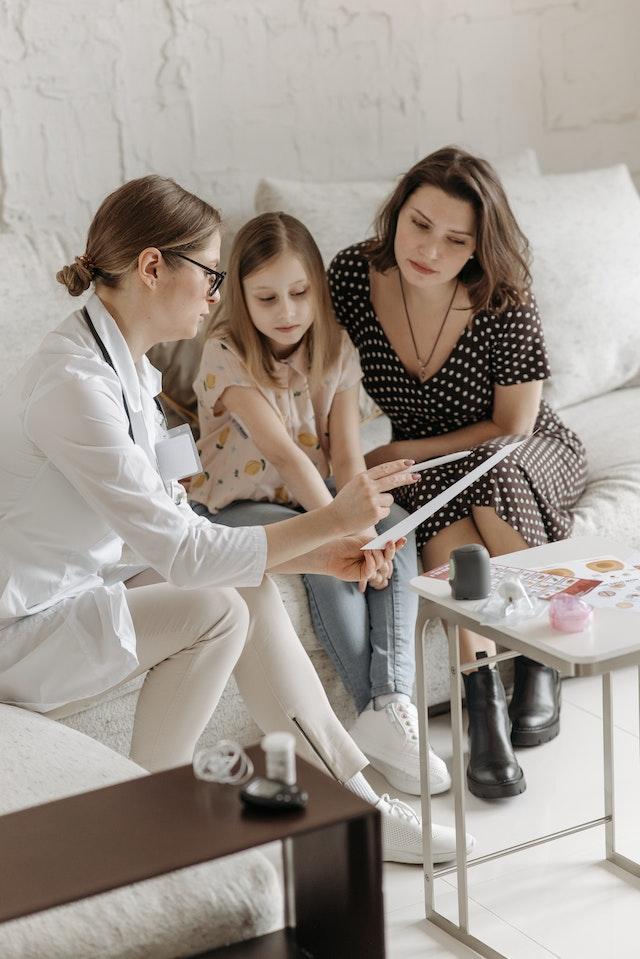Author Archive

The Connection Between Carbs and High Blood Sugar
Carbs and High Blood Sugar
High blood sugar can be a serious problem, and not just for those with diabetes. Eating too much of the wrong type of carbs can affect your blood sugar levels, whether you’re diabetic or not. Learn how the two are connected, and how you can make simple dietary and lifestyle changes to help keep your blood sugar in check.
High Blood Sugar and the Connection to Carbohydrates
Understanding the link between carbohydrates and high blood sugar is crucial for managing diabetes and maintaining overall health.
Here, we will delve into the brief explanation of high blood sugar and its effects, emphasizing the importance of comprehending the connection between carbs and elevated blood sugar levels.
High Blood Sugar: A Brief Explanation:
When we consume food, especially those rich in carbohydrates, our bodies break down these complex sugars into glucose, the primary source of energy for our cells. As glucose enters the bloodstream, our pancreas releases the hormone insulin, which enables glucose to enter the cells and provide them with energy.
However, in individuals with diabetes, a disruption occurs in this balance, leading to high blood sugar levels.
Effects of High Blood Sugar
- Increased Thirst and Frequent Urination: High blood sugar levels can cause excessive thirst, leading individuals to consume more fluids and subsequently urinate more frequently. This occurrence is due to the kidneys working harder to eliminate the excess glucose from the body through urine.
- Fatigue and Lack of Energy: When cells are unable to efficiently absorb glucose due to insufficient insulin or insulin resistance, the body is deprived of its main energy source. Consequently, this can lead to constant fatigue, decreased productivity, and an overall lack of energy.
- Blurred Vision and Slow Healing: Prolonged periods of elevated blood sugar levels can affect various parts of the body, including the eyes. Blurred vision may occur due to the swelling of the lens caused by changes in fluid balance. Additionally, high blood sugar impairs the body’s ability to heal wounds, increasing the risk of infections and delaying the healing process.
- Increased Risk of Heart Disease: Persistently high blood sugar levels can damage blood vessels and lead to the development of cardiovascular conditions. Over time, the excess glucose in the bloodstream can cause inflammation and atherosclerosis, increasing the risk of heart attacks, strokes, and other heart-related complications.
Understanding the Connection: Carbohydrates and Blood Sugar:
- Carbohydrates: The Primary Culprit
Carbohydrates play a significant role in raising blood sugar levels as they are broken down into glucose during digestion. It is essential to distinguish between different types of carbohydrates, such as simple carbohydrates found in sugary foods and refined grains, and complex carbohydrates present in whole grains, legumes, and vegetables.
- Counting Carbohydrates for Blood Sugar Control
Carbohydrate counting is a valuable strategy for individuals with diabetes to manage their blood sugar levels effectively. By monitoring and balancing their carbohydrate intake throughout the day, individuals can optimize their insulin dosage and maintain stable blood sugar levels.
Understanding Carbohydrates
Here, we will delve into the fascinating world of carbohydrates – the essential nutrients that fuel our bodies and provide us with the energy we need to go about our day. We will explore the definition and types of carbohydrates, understand their role as a primary source of energy, and uncover the impact they have on our blood sugar levels. So, let’s begin our journey of understanding carbohydrates!
Definition and Types of Carbohydrates
Carbohydrates are one of the three macronutrients, alongside proteins and fats, that are vital for maintaining a healthy and balanced diet. They are organic compounds made up of carbon, hydrogen, and oxygen atoms, and they can be classified into two main types: simple and complex carbohydrates.
Simple carbohydrates, also known as sugars, consist of one or two sugar molecules and are easier for the body to break down and absorb. They are commonly found in fruits, vegetables, dairy products, and refined sugars. Examples of simple carbohydrates include glucose, fructose, and sucrose.
On the other hand, complex carbohydrates are made up of longer chains of sugar molecules, making them more complex for the body to digest. They are found in foods such as whole grains, legumes, and starchy vegetables like potatoes. Complex carbohydrates provide a slower and more sustained release of energy compared to simple carbohydrates.
Role of Carbohydrates as a Primary Source of Energy
Carbohydrates play a vital role as the primary source of energy for our bodies. When we consume carbohydrates, our digestive system breaks them down into glucose, which is then transported through the bloodstream to cells throughout the body. Our body’s cells use glucose as fuel to perform various functions, including physical activity, brain function, and everyday tasks.
Additionally, carbohydrates provide quick energy. Simple carbohydrates, due to their shorter chains of sugar molecules, are rapidly absorbed by the body, leading to a quick burst of energy. This is particularly beneficial during intense physical activities or when immediate energy is needed.
Impact of Carbohydrates on Blood Sugar Levels
One crucial aspect of understanding carbohydrates is their impact on blood sugar levels. When we consume carbohydrates, they are broken down into glucose, which enters our bloodstream. As a result, the level of glucose in our blood rises.
For individuals with diabetes or those concerned about blood sugar management, monitoring carbohydrate intake becomes essential. Simple carbohydrates, due to their ease of digestion, can cause a rapid spike in blood sugar levels. Complex carbohydrates, on the other hand, provide a slower and steadier release of glucose, promoting more stable blood sugar levels.
It is essential to strike a balance when consuming carbohydrates, especially for individuals with diabetes, to ensure proper blood sugar control. Understanding the types and effects of carbohydrates can aid in making informed dietary choices and managing overall health.
How Carbs Affect Blood Sugar
Carbohydrates are a crucial source of energy for our bodies. They are found in various foods like grains, fruits, vegetables, and dairy products. When carbohydrates are consumed, they undergo a digestion process in our bodies, ultimately affecting our blood sugar levels. Understanding how carbohydrates impact blood sugar is vital for managing diabetes and maintaining overall health.
- Digestion Process of Carbohydrates in the Body
The digestion of carbohydrates begins in our mouths, where enzymes break down complex carbohydrates into smaller molecules. As we chew and swallow, these carbohydrates pass through our digestive system and into our stomachs. Here, the stomach acid further breaks them down.
Next, the carbohydrates enter the small intestine, where they are broken down into simple sugars, such as glucose, fructose, and galactose. These sugars are then absorbed into the bloodstream, causing a rise in blood sugar levels.
- Conversion of Carbohydrates to Glucose
Glucose, the primary sugar molecule derived from carbohydrates, plays a vital role in keeping our bodies functioning optimally. Once carbohydrates are broken down into glucose, it is transported via the bloodstream to our cells, providing them with the energy they need.
However, it is crucial to note that not all carbohydrates are equal. Different types of carbohydrates, such as complex and simple carbohydrates, affect our blood sugar levels differently.
Simple carbohydrates, found in foods like soda, candy, and sugary sweets, are rapidly converted into glucose, causing a sharp increase in blood sugar levels. On the other hand, complex carbohydrates, found in whole grains, vegetables, and legumes, are digested more slowly, leading to a gradual and steady release of glucose into the bloodstream.
- Release of Insulin to Regulate Blood Sugar Levels
To maintain stable blood sugar levels, our bodies rely on insulin, a hormone produced by the pancreas. When blood sugar levels rise after consuming carbohydrates, the pancreas releases insulin into the bloodstream.
Insulin acts as a key that unlocks the cells, allowing glucose to enter and be used for energy. It signals to the cells to take in glucose from the bloodstream, consequently lowering blood sugar levels. This intricate process helps prevent blood sugar levels from reaching dangerously high levels.
However, in individuals with diabetes, the production or effectiveness of insulin is impaired. This can result in high blood sugar levels because the cells are unable to effectively utilize glucose.
Consequently, people with diabetes need to manage their carbohydrate intake, medication, and lifestyle choices to regulate their blood sugar levels effectively.
The Glycemic Index
The Glycemic Index (GI) is a measurement that ranks carbohydrates based on their effect on blood sugar levels. It provides valuable insights into how different foods can affect our bodies and is a valuable tool for managing blood sugar levels and overall health.
- Definition and Significance of the Glycemic Index
The Glycemic Index is a numerical scale that measures how quickly and how much a carbohydrate-containing food raises blood sugar levels compared to pure glucose, which has a GI value of 100. The GI scale ranges from to 100, with higher values indicating a faster and larger rise in blood sugar levels. This index is particularly relevant for individuals with diabetes, as it helps them make informed food choices that can aid in managing their condition.
The significance of the glycemic index lies in understanding how different carbohydrates affect our bodies. Foods with a high GI value are rapidly digested and absorbed, causing a sharp increase in blood sugar levels.
On the other hand, low-GI foods are digested and absorbed more slowly, resulting in a gradual and more sustained rise in blood sugar levels. By incorporating low-GI foods into our diets, we can promote stable blood sugar levels, increase satiety, and potentially reduce the risk of chronic diseases such as diabetes and heart disease.
- Explanation of Low-GI and High-GI Foods
Low-GI foods are those that have a GI value of 55 or less. These foods are usually rich in fiber, protein, and healthy fats, which slow down digestion and absorption, leading to a gentle and steady increase in blood sugar levels.
Examples of low-GI foods include whole grains like quinoa and oatmeal, legumes such as lentils and chickpeas, most fruits and vegetables, and nuts and seeds. Incorporating these foods into our meals can provide sustained energy, promote weight management, and support overall well-being.
On the other hand, high-GI foods are quickly digested and absorbed, leading to a rapid spike in blood sugar levels. These foods have a GI value of 70 or higher and are often low in fiber and nutrients. Examples of high-GI foods include sugary snacks and beverages, white bread and rice, potatoes, and processed breakfast cereals.
Consuming too many high-GI foods can result in blood sugar fluctuations, increased hunger, and a higher risk of chronic diseases. However, it’s important to note that not all high-GI foods are unhealthy, as some nutritious fruits and vegetables can have a high GI value due to their natural sugars.
- Influence of GI on Blood Sugar Levels
The glycemic index plays a crucial role in managing blood sugar levels. When we consume high-GI foods, our blood sugar levels rise rapidly, triggering the pancreas to release insulin. Insulin helps transport glucose from the blood into the cells for energy or storage. However, this sudden surge in blood sugar followed by a rapid drop can leave us feeling tired, hungry, and craving more high-GI foods.
In contrast, low-GI foods promote a slower and more steady increase in blood sugar levels, resulting in a gradual release of insulin. This helps maintain stable energy levels, keeps us feeling fuller for longer, and reduces the likelihood of overeating or experiencing intense sugar cravings. For individuals with diabetes, understanding the GI of various foods can assist in managing insulin levels and achieving better glycemic control.
The Impact of Carbohydrate Consumption on High Blood Sugar
Now, it is time to explore how excessive carbohydrate intake can lead to blood sugar spikes, the effects of refined and processed carbohydrates on blood sugar, and the crucial role of portion control in managing blood sugar levels.
Excessive Carbohydrate Intake and Blood Sugar Spikes
- Carbohydrates and Blood Sugar: Carbohydrates are broken down into glucose, which is a primary source of energy for our bodies. When we consume excessive amounts of carbohydrates, our blood sugar levels can soar, leading to a condition known as hyperglycemia.
- Glycemic Index: Different carbohydrates have varying effects on blood sugar levels. High glycemic index foods, such as white bread and sugary drinks, cause a rapid spike in blood sugar levels, while low glycemic index foods, like whole grains and non-starchy vegetables, result in a slower rise in blood sugar levels.
- Insulin Resistance: Chronically high blood sugar levels due to excessive carbohydrate consumption can contribute to insulin resistance. This condition makes it difficult for the body to properly regulate blood sugar, leading to a higher risk of developing type 2 diabetes.
Effects of Refined and Processed Carbohydrates on Blood Sugar
- Definition of Refined and Processed Carbohydrates: Refined and processed carbohydrates refer to foods that have been stripped of their natural fiber and nutrients during processing. These include white bread, pasta, sugary cereals, and processed snacks.
- Rapid Blood Sugar Spikes: Refined and processed carbohydrates are quickly broken down into glucose, causing a rapid increase in blood sugar levels. This sudden surge is followed by a sharp drop, leaving individuals feeling fatigued and hungry, which can lead to overeating.
- Lack of Satiety: Foods high in refined carbohydrates often lack fiber and protein, which are essential for feeling full and satisfied. As a result, individuals may consume larger portions, leading to continued blood sugar spikes and weight gain.
Role of Portion Control in Managing Blood Sugar Levels
- Understanding Portion Sizes: Portion control involves being mindful of the quantity of food we consume. It is crucial for managing blood sugar levels. It allows for a more balanced and controlled intake of carbohydrates, preventing blood sugar spikes.
- Balancing Macronutrients: By managing portion sizes, we can ensure that our meals consist of a proper balance of carbohydrates, proteins, and fats. This helps slow down the digestion and absorption of carbohydrates, leading to more stable blood sugar levels.
- The Plate Method: A useful tool for portion control is the plate method. This involves dividing your plate into sections for specific food groups, such as dedicating half the plate to non-starchy vegetables, a quarter to lean protein, and a quarter to whole grains or starchy vegetables.
Managing High Blood Sugar through Carbohydrate Choices
High blood sugar, also known as hyperglycemia, is a common concern for individuals living with diabetes or anyone seeking to maintain optimal blood sugar levels. One effective way to manage this condition is by making mindful carbohydrate choices. In this chapter, we will explore the importance of selecting complex carbohydrates over simple ones, incorporating fiber-rich foods, and finding the right balance with proteins and fats to minimize blood sugar spikes.
- Opting for Complex Carbohydrates over Simple Carbohydrates
When it comes to managing blood sugar levels, the type of carbohydrates we consume plays a crucial role. Complex carbohydrates are a healthier choice compared to simple carbohydrates, as they are digested and absorbed more slowly by the body. This slow breakdown reduces the sudden increase in blood glucose levels.
The list of complex carbohydrates includes nutrient-rich whole grains like brown rice, quinoa, and whole wheat bread. Unlike refined grains, which have been stripped of most of their nutritional value, whole grains offer essential vitamins, minerals, and dietary fiber. By replacing white bread, white rice, and processed cereals with their whole grain counterparts, you can provide your body with a steady release of energy and better blood sugar regulation.
- Incorporating Fiber-Rich Foods to Slow Down Carbohydrate Digestion
Another effective way to manage high blood sugar is by incorporating fiber-rich foods into your daily diet. Dietary fiber is the indigestible part of plant-based foods that adds bulk to your meals, promoting feelings of fullness and aiding in digestion. More importantly, fiber helps slow down the digestion of carbohydrates, preventing rapid spikes in blood sugar levels.
Fruits and vegetables, legumes, and whole grains are excellent sources of dietary fiber. By including a variety of these foods in your meals, you not only enhance nutritional intake but also contribute to better blood sugar control. Aim for at least 25 to 30 grams of fiber per day, gradually increasing your intake to allow your body to adapt.
- Balancing Carbohydrate Intake with Proteins and Fats to Minimize Blood Sugar Spikes
While the focus of blood sugar management lies in carbohydrate choices, it’s crucial to strike a balance between carbohydrates, proteins, and fats. Combining these macronutrients can help slow down digestion and minimize blood sugar spikes after meals.
Adding lean protein sources like poultry, fish, tofu, or beans to your meals helps regulate blood sugar levels. Protein takes longer to digest, preventing the rapid release of glucose into the bloodstream. Additionally, incorporating healthy fats from sources such as avocados, nuts, and olive oil can further slowdown digestion, providing a more sustained release of glucose.
By creating balanced meals that include a healthy mix of complex carbohydrates, proteins, and fats, you can effectively manage your blood sugar levels and maintain greater control over your health.
Monitoring Carbohydrate Intake for Better Blood Sugar Management
Here, we will discuss the importance of carbohydrate counting or tracking, the utilization of technology and tools to aid in carbohydrate monitoring, and the significance of consulting with a healthcare professional for personalized guidance. By understanding these aspects, you can take control of your blood sugar levels and promote better overall health.
Importance of Carbohydrate Counting or Tracking
Carbohydrates are the main macronutrient that significantly affects blood sugar levels. Monitoring carbohydrate intake allows individuals to have better control over their blood sugar levels. Here’s why carbohydrate counting or tracking is crucial:
- Blood Sugar Management: By knowing the amount of carbohydrates consumed in each meal and snack, individuals can adjust their insulin doses or medications accordingly, helping to maintain stable blood sugar levels.
- Individualized Approach: Different individuals may have different sensitivities to carbohydrates. Monitoring carbohydrate intake enables individuals to personalize their diet plans based on their unique needs, optimizing blood sugar management.
- Balanced Nutrition: Carbohydrate counting promotes a well-rounded and balanced diet. This approach emphasizes portion control and awareness of overall nutrient intake, ensuring that other essential nutrients, such as proteins, fats, vitamins, and minerals, are adequately included in meals.
Utilizing Technology and Tools to Aid in Carbohydrate Monitoring
With advancements in technology, various tools and applications have been developed to assist in carbohydrate monitoring. These technological aids offer convenience, accuracy, and real-time data, making blood sugar management easier for individuals. Here are some key tools and technologies:
- Carbohydrate Counting Apps: These smartphone applications allow users to track their carbohydrate intake by simply entering the food they consume. These apps often provide a database of foods and their corresponding carbohydrate content, simplifying the process of tracking and monitoring carbohydrate intake.
- Continuous Glucose Monitoring (CGM) Systems: CGM systems provide real-time blood sugar readings, helping individuals understand the impact of their carbohydrate intake on their blood sugar levels. By monitoring trends and patterns, individuals can make informed decisions about their food choices and insulin dosing.
- Insulin Pumps: Insulin pumps deliver a constant flow of insulin throughout the day, with the ability to customize insulin boluses based on carbohydrate intake. Some newer models even have built-in carbohydrate databases, allowing users to calculate and administer insulin doses more accurately.
Consulting with a Healthcare Professional for Personalized Guidance
While technology and tools can greatly assist in carbohydrate monitoring, it is vital to consult with a healthcare professional for personalized guidance. These professionals, including doctors, dietitians, and diabetes educators, can provide tailored advice and support based on an individual’s specific needs. Here’s why consulting with a healthcare professional is crucial:
- Individualized Recommendations: Healthcare professionals consider various factors such as age, weight, physical activity level, and overall health status to provide personalized recommendations regarding carbohydrate intake. This ensures that individuals receive the most appropriate guidance for their specific circumstances.
- Continuous Monitoring and Adjustments: Healthcare professionals can help individuals set goals and regularly monitor their progress. They can make adjustments to the carbohydrate intake plan as needed, considering changes in health or lifestyle that may impact blood sugar management.
- Education and Support: Diabetes management encompasses more than just monitoring carbohydrate intake. Healthcare professionals offer essential education on food choices, portion sizes, reading nutrition labels, and other aspects crucial for maintaining stable blood sugar levels. They also provide the necessary support, answering questions and addressing concerns individuals may have along their diabetes journey.
Conclusion
High blood sugar is a problem that can have serious health implications. Eating too many of the wrong kinds of carbs can make it harder to manage your blood sugar, so it’s important to be aware of the connection between carbs and high blood sugar. Making small changes like eating more whole grains, eating smaller portions, reducing sugar intake and getting active can help you stay healthy and keep your blood sugar levels in check.
FAQs about the Connection Between Carbs and High Blood Sugar
Can all carbohydrates cause high blood sugar?
- While all carbohydrates can affect blood sugar levels, some have a greater impact than others. Refined carbs, processed foods, and sugary beverages tend to cause a more rapid and significant increase in blood sugar compared to whole foods that contain natural sugars and fiber.
Is it necessary to avoid carbohydrates completely to maintain normal blood sugar levels?
- It is not necessary to eliminate carbohydrates entirely from your diet. However, individuals with high blood sugar or diabetes should be mindful of their carbohydrate intake and make healthier choices by opting for complex carbs, fiber-rich foods, and controlling portion sizes.
Can low-carb diets help manage high blood sugar?
- Low-carb diets, such as the ketogenic or Atkins diet, have shown positive effects in managing high blood sugar. By reducing carbohydrate intake, the body relies on alternative fuel sources, such as fats, leading to more stable blood sugar levels. However, it is essential to consult with a healthcare professional before making significant dietary changes.
What are some healthier carbohydrate options to help control blood sugar?
- Opt for whole grains such as quinoa, brown rice, and whole wheat bread instead of refined grains. Include plenty of non-starchy vegetables like broccoli, spinach, and cauliflower. Additionally, legumes like lentils and chickpeas are excellent sources of complex carbs and fiber.
Are there any specific carbs that can help stabilize blood sugar levels?
- Foods rich in fiber, such as oats, chia seeds, and flaxseeds, can help slow down the digestion of carbohydrates, resulting in a slower and more controlled release of glucose into the bloodstream. Incorporate these foods within a balanced diet to promote stable blood sugar levels.
Should I monitor my carbohydrate intake if I have prediabetes or diabetes?
- If you have prediabetes or diabetes, monitoring carbohydrate intake is crucial for managing blood sugar levels. It is recommended to work with a registered dietitian or healthcare professional to determine a suitable carbohydrate intake based on individual needs and medication.
Can lifestyle factors besides carbohydrates impact high blood sugar levels?
- Yes, lifestyle factors like physical activity, stress levels, and the overall balance of your diet can have an impact on blood sugar levels. Regular exercise, stress management techniques, and a well-rounded diet can contribute to better blood sugar control alongside carbohydrate management.
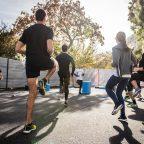
Can Vitamin B Prevent Peripheral Neuropathy Caused by Diabetes?
Peripheral neuropathy is a common complication of diabetes that affects the nervous system, causing debilitating symptoms such as pain, numbness, and tingling in the feet and hands. This condition is caused by high blood sugar levels that damage the nerves over time. If left untreated, this condition can lead to foot ulcers, infections, and even amputations.
Preventing peripheral neuropathy is crucial for individuals with diabetes, as it can greatly improve their quality of life. However, finding effective preventive measures can be challenging. Recently, studies have shown that vitamin B may be a potential solution.
Vitamin B is a group of water-soluble vitamins that play a crucial role in the nervous system’s function. Specifically, vitamin B1 (thiamine), vitamin B6 (pyridoxine), and vitamin B12 (cobalamin) have been studied for their potential neuroprotective effects in individuals with diabetes.
One study found that individuals with diabetes who supplemented with vitamin B12 for six months experienced improved nerve conduction and decreased symptoms of neuropathy. Another study found that taking a combination of vitamin B1, B6, and B12 supplements for six months led to significant improvements in neuropathy symptoms and nerve conduction.
While it is essential to get these vitamins from a balanced diet, some individuals with diabetes may not be able to absorb these vitamins correctly due to their condition’s effects on their digestive system. Thus, taking vitamin B supplements can help in maintaining adequate levels of these nutrients in the body.
Understanding Peripheral Neuropathy Caused by Diabetes
Peripheral neuropathy is a condition that affects the nerves that carry information to and from the brain, spinal cord and the rest of the body. It occurs when these nerves are damaged and is usually associated with diabetes. In this chapter, we will discuss the causes, symptoms, and risk factors of peripheral neuropathy in relation to diabetes.
What is Peripheral Neuropathy?
Peripheral neuropathy is a type of nerve damage that can result in pain, numbness, tingling, and weakness in the hands and feet. This condition commonly affects people with diabetes, and the risk of developing it increases if blood sugar levels are not well-controlled.
How does Diabetes cause Peripheral Neuropathy?
Diabetes is a disease that affects the way the body uses blood sugar (glucose). When the body is unable to produce insulin or use it properly, glucose levels in the blood become too high. Over time, high blood sugar levels can damage nerves, particularly those in the feet and legs, leading to peripheral neuropathy.
Symptoms of Peripheral Neuropathy
Peripheral neuropathy can cause a wide range of symptoms, depending on which nerves are affected. Some common symptoms of peripheral neuropathy caused by diabetes include:
- Tingling or burning sensation in the feet or hands
- Numbness or loss of sensation in the feet or hands
- Sharp or shooting pain in the feet or hands
- Muscle weakness or difficulty in moving the arms or legs
- Loss of balance or coordination
- Hypersensitivity to touch
The Role of Vitamin B in Preventing Peripheral Neuropathy
Vitamin B is a group of essential nutrients that play a vital role in maintaining overall health. Apart from providing energy and supporting the immune system, vitamin B has also been found to be effective in preventing peripheral neuropathy.
Research has shown that vitamin B can help prevent peripheral neuropathy by supporting nerve health and function. In particular, the B vitamins B1, B6, and B12 have been found to be particularly effective in reducing the risk of developing peripheral neuropathy.
- Vitamin B1, also known as thiamine, plays a critical role in the metabolism of glucose, which is the primary source of energy for nerve cells. When supply is inadequate, nerve cells can undergo oxidative stress, leading to inflammation, and damage to the nerves. Vitamin B1 has been found to protect nerve cells from oxidative stress and inflammation, thus preventing peripheral neuropathy.
- Vitamin B6, also known as pyridoxine, is essential in the formation of myelin, which is the protective covering that surrounds nerve cells. Myelin acts as insulation, allowing nerve signals to transmit faster and more efficiently. A deficiency in vitamin B6 can lead to nerve damage and a disease called neuropathy.
- Vitamin B12, also known as cobalamin, is crucial in the metabolism of nucleic acids and fatty acids, which are necessary for the formation and maintenance of nerve cells. Furthermore, vitamin B12 is responsible for the production of myelin. A deficiency in vitamin B12 can lead to nerve damage and peripheral neuropathy.
Studies that Support the Use of Vitamin B for Preventing Peripheral Neuropathy
Research has shown that vitamins B1, B6, and B12 can play a critical role in preventing peripheral neuropathy. These vitamins work together to strengthen the nerves, reduce inflammation, and improve nerve function, helping to prevent nerve damage.
In a study published in the Journal of Diabetes and Its Complications, researchers found that taking 600 mg of Alpha-Lipoic Acid and 400 mg of vitamin B complex daily for 24 weeks significantly reduced neuropathic symptoms in people with type 2 diabetes.
Similarly, a meta-analysis of five clinical trials found that taking vitamin B complex supplements reduced diabetic neuropathy and improved nerve function in people with type 2 diabetes. These findings suggest that incorporating vitamin B into one’s diet can help manage peripheral neuropathy, especially for those with diabetes.
The Limitations of Current Research
While the role of vitamin B in preventing peripheral neuropathy is promising, current research does have its limitations. For example, most studies are small and only focus on specific types of neuropathy, such as diabetic neuropathy. Additionally, the optimal dosage and duration of vitamin B supplementation are not yet known. More research is needed to determine the best way to incorporate vitamin B into one’s diet for maximum benefits.
Furthermore, it’s important to note that vitamin B supplements can interact with other medications, potentially causing adverse reactions. Therefore, it’s important to discuss the use of vitamin B supplements with a healthcare professional before taking them.
Supplementing with Vitamin B for Prevention
Vitamin B is a crucial nutrient that our body needs to function efficiently. It is responsible for fueling our bodies with energy, keeping our brain healthy, and producing red blood cells. Unfortunately, not everyone gets enough vitamin B in their diet, which can lead to several health problems. This is why supplementing with vitamin B can be a game-changer, especially if you are at risk of a deficiency. Here, we’ve put together essential information on how to incorporate vitamin B into your diet, recommended daily amounts, and when to consider taking supplements.
How to Incorporate Vitamin B into Your Diet
The best way to get vitamin B is through a balanced diet that includes a variety of foods. Vitamin B can be found in many foods, including:
- Whole grains like rice, oats, and barley
- Meat and fish, including chicken, turkey, tuna, and salmon
- Dark, leafy vegetables like spinach, kale, and broccoli
- Dairy products like milk and yogurt
- Legumes like beans and lentils
A healthy diet that includes a combination of these foods might provide adequate levels of vitamin B for most people. However, those with dietary restrictions, such as vegetarians and vegans, may struggle to get enough vitamin B from food alone.
Recommended Daily Amounts
The recommended daily amount of vitamin B varies depending on factors such as age, sex, and other health conditions.
Generally, the recommended daily amounts for adults are:
- Vitamin B1 (Thiamine): 1.2 mg per day for men and 1.1 mg per day for women
- Vitamin B2 (Riboflavin): 1.3 mg per day for men and 1.1 mg per day for women
- Vitamin B3 (Niacin): 16 mg per day for men and 14 mg per day for women
- Vitamin B5 (Pantothenic Acid): 5 mg per day for both men and women
- Vitamin B6 (Pyridoxine): 1.7 mg per day for men and 1.5 mg per day for women
- Vitamin B7 (Biotin): 30 mcg per day for both men and women
- Vitamin B9 (Folate): 400 mcg per day for both men and women
- Vitamin B12 (Cobalamin): 2.4 mcg per day for both men and women
When to Consider Taking Vitamin B Supplements
For most people, a healthy diet provides enough vitamin B to avoid a deficiency. However, some people may need to take supplements to meet their daily requirements. These include:
- Pregnant or breastfeeding women: These individuals may need more vitamin B than usual to support their and their baby’s health.
- People on medication: Certain medications can deplete vitamin B levels in the body, making supplements necessary.
- People with medical conditions: Diseases like celiac disease and Crohn’s disease can interfere with the body’s ability to absorb nutrients, making supplementation necessary.
If you are considering taking vitamin B supplements, it’s essential to talk to your doctor first. Some vitamin B supplements can interfere with medication or cause side effects, such as nausea or dizziness.
Other Ways to Prevent Peripheral Neuropathy
In addition to Vitamin B, there are several other ways to prevent peripheral neuropathy, which we will discuss in this chapter.
- Managing Blood Sugar Levels
One of the most important ways to prevent peripheral neuropathy is to manage your blood sugar levels. High blood sugar can damage the nerves in your feet and legs, leading to symptoms of neuropathy. If you have diabetes, it is especially important to keep your blood sugar levels under control. This can be achieved by monitoring your blood sugar levels regularly, taking medications as prescribed by your doctor, and eating a healthy diet.
- Exercising Regularly
Regular exercise can also help prevent peripheral neuropathy. Exercise improves blood flow to your feet and legs, which can help prevent nerve damage. Exercise also helps reduce inflammation and improve nerve function, which can help prevent neuropathy symptoms. You should aim to exercise for at least 30 minutes a day, five days a week. Consult your healthcare provider before starting any exercise program.
- Maintaining a Healthy Diet and Lifestyle
Maintaining a healthy diet and lifestyle is also important for preventing peripheral neuropathy. You should avoid smoking and limit your alcohol consumption, which can both damage nerves. You should also eat a diet rich in fruits, vegetables, and whole grains, as these foods contain essential vitamins and minerals that support nerve health. Additionally, you should aim to maintain a healthy weight, as being overweight or obese can increase your risk of developing neuropathy.
Conclusion
Peripheral neuropathy caused by diabetes is a painful and debilitating condition. However, by taking the right steps to keep blood sugar levels regulated, the risk of nerve damage can be reduced. Vitamin B supplementation is one such step that could be taken to help prevent nerve damage and reduce the effects of existing nerve damage caused by diabetes. Taking b-complex, thiamine B1, B6, and B12 can be especially beneficial for maintaining nerve health, which could help decrease the risk and severity of peripheral neuropathy caused by diabetes.
FAQ
How does Vitamin B help in preventing Peripheral Neuropathy caused by Diabetes?
- Vitamin B12 plays an essential role in the maintenance and repair of the nerves’ myelin sheath. Myelin sheaths are essential for the proper functioning of the nerves.
How much Vitamin B should I take to prevent Peripheral Neuropathy caused by Diabetes?
- The recommended daily dosage of Vitamin B12 for adults is 2.4 mcg. It is best to consult with your doctor, who can suggest the appropriate dosage based on your individual needs.
Can taking too much Vitamin B cause any adverse effects?
- Taking excessive amounts of Vitamin B can lead to mild side effects such as diarrhea, itching, or rash. It is essential to follow the recommended dosage as prescribed by your doctor.
Can Vitamin B prevent Peripheral Neuropathy caused by conditions other than Diabetes?
- Yes, Vitamin B is beneficial in preventing Peripheral Neuropathy caused by various medical conditions and nervous system disorders. However, it is essential to consult with your doctor before consuming any supplements.
Are there any other benefits of consuming Vitamin B?
- Vitamin B plays a crucial role in maintaining a healthy nervous system, promoting red blood cell formation, and supporting the proper functioning of the brain.
What are the food sources of Vitamin B?
- Natural food sources of Vitamin B include fish, shellfish, poultry, meat, eggs, and dairy products. Vegetarians and vegans can consume nutritional yeast, fortified cereals, and plant-based milk.
Can I combine Vitamin B with other supplements or medication?
- It is crucial to consult with your doctor or pharmacist before combining Vitamin B with any other supplements or medication. Certain medications can interact with Vitamin B supplements, leading to adverse effects.

Diabetic Gout: The Overlooked Complication of Type 2 Diabetes
Diabetes is one of the most widely-known metabolic disorders, but even within the diabetes community, the association between diabetes and gout is not widely discussed.
Gout is a form of arthritis that can occur in diabetic patients. It is caused by the buildup of uric acid crystals in the joints, and it is estimated that approximately 15-20% of people with type 2 diabetes will eventually develop gout.
Diabetic gout is a potentially-debilitating complication which can impact quality of life. Therefore, it is important to understand the condition and how it is related to diabetes. This article outlines the symptoms, causes, risk factors, diagnosis, prevention and treatment of diabetic gout.
What is Gout and How is it Related to Diabetes?
Gout is an inflammatory type of arthritis caused by the accumulation of uric acid in the joints. This leads to the formation of crystals, which can cause intense pain and inflammation.
It is also characterized by the formation of tophi (hard deposits of uric acid) on the skin, which can lead to swellings and deformities. Gout is linked to type 2 diabetes because it is often caused by an elevated level of blood sugar.
In diabetics, the body’s natural defense mechanisms against high sugar levels have malfunctioned, leading to a buildup of uric acid in the joints.
What Are the Symptoms of Diabetic Gout?
Symptoms of diabetic gout are similar to those of regular gout, but may be more severe due to the additional impact of diabetes on the joints.
- Pain: Pain is the most common symptom of gout and diabetes. Pain resulting from diabetic gout tends to be more chronic and severe than regular gout.
- Inflammation: Diabetic gout can cause inflammation and swelling in the joints, leading to stiffness and difficulty moving. In severe cases, the joints may become deformed.
- Redness and Warmth: Diabetic gout can lead to redness and warmth around the affected area. This is caused by the accumulation of uric acid in the joint.
- Tophi: Tophi are hard deposits of uric acid that form on the skin as a result of diabetes and gout. They appear as nodules or plaques, and can cause itchiness and irritation.
What Causes Diabetic Gout?
Diabetic gout is caused by the accumulation of uric acid crystals in the joints, which results from diabetes. When diabetics have elevated levels of blood sugar, their body’s natural defense mechanisms malfunction, leading to a buildup of uric acid in the joints. This uric acid then crystallizes and causes gouty arthritis.
What Are the Risk Factors for Diabetic Gout?
There are several risk factors associated with diabetic gout, including:
- Diabetic Complications: Diabetics who suffer from other complications, such as eye, kidney and nerve damage, may be more prone to developing gout.
- Family History: A family history of gout or diabetes increases the risk of diabetic gout.
- Diet: Diabetics who consume high-purine diets are at an increased risk of developing gout.
- Medications: Certain medications, such as diuretics, can increase the risk of gout in diabetes patients.
- Alcohol: Alcohol consumption can lead to gout in both diabetic and non-diabetic individuals.
- Age and Gender: Older men and women are more likely to develop gout than their younger counterparts.
How is Diabetic Gout Diagnosed?
Diabetic gout can be diagnosed with a variety of tests, including a physical examination, uric acid test, x-rays, and joint fluid analysis. The physical examination is used to check for swelling, redness, and warmth around the affected area.
The uric acid test measures the levels of uric acid in the blood, which can indicate gout. X-rays can be used to look for tophi and joint damage, while a joint fluid analysis can detect the presence of uric acid crystals.
How is Diabetic Gout Prevented?
There are several steps that can be taken to prevent the development of diabetic gout, including:
- Maintaining Blood Sugar Levels: It is important for diabetics to keep their blood sugar levels under control, as elevated levels can lead to gout.
- Eating a Low-Purine Diet: Diabetics should follow a low-purine diet to reduce their risk of developing gout. Foods high in purines, such as red meats, shellfish and organ meats, should be avoided.
- Maintaining a Healthy Weight: Excess weight can put strain on the joints, leading to an increased risk of gout.
- Limiting Alcohol Consumption: Excessive consumption of alcohol can increase the risk of gout.
- Taking Estrogen Supplements: Post-menopausal women may consider taking estrogen supplements to reduce their risk of diabetic gout.
- Taking Medication: Diabetics can take medications to reduce the risk of gout, such as Allopurinol and Uricosuric Drugs.
How is Diabetic Gout Treated?
Diabetic gout can be treated with a variety of medications and lifestyle changes, including:
- Nonsteroidal anti-inflammatory drugs (NSAIDs): NSAIDs such as ibuprofen and naproxen can be used to reduce pain and inflammation in the joints.
- Corticosteroids: Corticosteroids can help to reduce inflammation.
- Colchicine: Colchicine can be used to reduce the risk of tophi formation.
- Changes in Diet and Exercise: Diabetics should adopt a healthy diet and exercise routine to reduce the risk of gout. This includes limiting purine-rich foods, alcohol consumption, and maintaining a healthy weight.
Conclusion
Diabetic gout is a potentially-debilitating complication of type 2 diabetes. It is caused by the accumulation of uric acid in the joints and is characterized by pain, inflammation, and tophi formation.
There are several risk factors associated with diabetic gout, including diabetic complications, family history, diet, medications, and gender. Diagnosis is made through a physical examination, blood tests, x-rays, and joint fluid analysis.
Prevention of diabetic gout includes controlling blood sugar levels, eating a low-purine diet, maintaining a healthy weight, limiting alcohol consumption, and taking medications.
Treatment of diabetic gout can involve taking NSAIDs, corticosteroids, colchicine, and making lifestyle changes. It is important that diabetics be aware of the risks associated with diabetic gout, as well as the steps that can be taken to prevent and treat it.
FAQ
What is Diabetic Gout?
- Diabetic Gout is a medical condition that occurs when excess levels of uric acid accumulate in the blood due to increased insulin resistance in diabetic patients. This leads to the formation of urate crystals in the joints, causing inflammation and pain.
How does Diabetic Gout affect patients?
- Patients with Diabetic Gout may experience recurrent episodes of joint pain, swelling, and tenderness. These symptoms can significantly impact their quality of life, limit their mobility, and affect their ability to carry out daily activities.
What treatment options are available for Diabetic Gout?
- Treatment for Diabetic Gout typically involves managing blood sugar levels, reducing inflammation and pain, and preventing further joint damage. This can include medications such as non-steroidal anti-inflammatory drugs (NSAIDs), colchicine, and corticosteroids. Lifestyle changes such as maintaining a healthy diet and exercise regime can also be helpful.
Can Diabetic Gout lead to other complications?
- Yes, if left untreated, Diabetic Gout can lead to other complications such as chronic joint damage, kidney disease, and cardiovascular disease. Therefore, it is important to seek medical attention as soon as symptoms arise.
Is Diabetic Gout preventable?
- As with many health conditions, prevention is key. In the case of Diabetic Gout, lifestyle changes such as eating a healthy diet, maintaining a healthy weight, and staying physically active can help prevent the development of the condition.
What are some common risk factors associated with Diabetic Gout?
- Common risk factors for Diabetic Gout include obesity, high blood pressure, high cholesterol, and a family history of the condition. Poorly managed blood sugar levels in diabetic patients can also increase the risk.
How can I tell if I have Diabetic Gout?
- If you are experiencing joint pain, swelling, and tenderness, it is important to see a healthcare professional for a proper diagnosis. They may conduct tests such as blood tests, joint fluid tests, or imaging tests to confirm the presence of Diabetic Gout.
Is Diabetic Gout curable?
- Diabetic Gout is a chronic condition that requires ongoing management but can be effectively treated to reduce symptoms and prevent complications. While there is currently no cure for the condition, prompt diagnosis and treatment can significantly improve quality of life.
Can I continue to work and participate in physical activities with Diabetic Gout?
- Individuals with Diabetic Gout can continue to work and participate in physical activities as long as they receive appropriate treatment and follow their healthcare provider’s recommendations. However, it is important to listen to your body and avoid activities that exacerbate pain and inflammation.
Are there any dietary restrictions for Diabetic Gout patients?
- Patients with Diabetic Gout may benefit from limiting their intake of foods high in purines, which can increase uric acid levels in the blood. This can include organ meats, seafood, and alcohol. However, it is important to consult with a healthcare provider and/or registered dietitian before making significant dietary changes.

Do Pine Nuts Lower Blood Sugar?
Many people around the world are struggling with medical conditions related to high blood sugar levels, such as diabetes. As a result, a growing number of studies have focused on the role that certain foods and nutrients play in regulating blood sugar levels.
Pine nuts are one such food that has gained interest and attention for its potential to lower blood sugar levels. In this article, we will look at the link between pine nuts and blood sugar levels, examine the existing research on the topic, and provide insights into incorporating pine nuts into a healthy diet.
Understanding Blood Sugar Levels and Its Importance in the Body
Blood sugar, also known as glucose, is a type of sugar that travels through the bloodstream to provide energy to the body’s cells. It is an essential source of fuel for all the body’s functions, including the brain, muscles, and organs.
Why is Blood Sugar Important?
The body tightly regulates blood sugar levels, ensuring that they remain within specific ranges. The reason for this is that too much or too little blood sugar can lead to serious health complications.
When blood sugar levels are too high, it can lead to hyperglycemia, which is a condition that can damage vital organs like the brain and kidneys. At the same time, when blood sugar levels are too low, it can cause hypoglycemia, leading to lightheadedness, seizures, and even unconsciousness.
Blood sugar levels are an essential component of overall health and wellbeing. Understanding how the body’s regulation mechanisms work can help individuals make informed lifestyle choices that support healthy blood sugar levels.
Consultation with healthcare professionals can also play a crucial role in preventing and managing conditions related to blood sugar levels.
What are Pine Nuts?
If you’ve ever enjoyed a pesto sauce or a nutty granola, then chances are you’ve tasted pine nuts. But what exactly are they?
Pine nuts, also known as pignoli, are the edible seeds harvested from pine trees. They’re usually found inside the cones of different species of pine trees, including the stone pine, Korean pine, and piñon pine.
These small, ivory-colored nuts pack a lot of flavor and nutrition into a tiny package.
Let’s explore details about these nuts:
Nutrition
- Pine nuts are a good source of healthy fats, protein, and fiber. They also contain vitamins and minerals like zinc, magnesium, and vitamin E.
- Studies have shown that consuming pine nuts (and other nuts) can reduce the risk of heart disease and lower cholesterol levels.
- Pine nuts are also a low-glycemic-index food, meaning they don’t cause a rapid rise in blood sugar levels. This makes them a good snack option for people with diabetes.
Flavor
- Pine nuts have a rich, buttery flavor with a slightly sweet and nutty taste.
- They have a delicate texture that’s similar to sunflower seeds or almonds.
- Pine nuts are often used in Mediterranean cuisine, especially in dishes like pesto sauce, salads, and baked goods.
Harvesting and Processing
- Pine nuts are generally harvested by hand because the cones need to be opened to access the seeds inside.
- Harvesting and processing pine nuts can be a time-consuming and labor-intensive process, which is why they tend to be more expensive than other types of nuts.
- Once harvested, pine nuts need to be shelled to remove the hard outer shell before they can be eaten.
Uses
- Pine nuts are a versatile ingredient that can be used in many different types of dishes, from savory to sweet.
- They’re a popular ingredient in Mediterranean and Middle Eastern cuisine, but can also be found in dishes from around the world.
- Some popular uses for pine nuts include as a topping for salads, roasted or baked in savory dishes, or blended into desserts like cakes and cookies.
How do Pine Nuts Affect Blood Sugar Levels?
- Several studies have been conducted to explore the link between pine nuts and blood sugar levels. One small study published in the Journal of the Science of Food and Agriculture found that consuming pine nuts with high-carbohydrate meals resulted in lower postprandial blood sugar levels compared to meals without pine nuts.
- Another study conducted by the University of Sydney found that consuming pine nuts as part of a low-glycemic index (GI) diet resulted in lower fasting blood sugar levels compared to a high-GI diet without pine nuts.
- The specific mechanisms by which pine nuts impact blood sugar levels are not yet fully understood. However, it is believed that the fiber, healthy fats, and minerals in pine nuts may play a role in regulating blood sugar levels. For example, the fiber in pine nuts can slow down the absorption of glucose into the bloodstream, reducing the likelihood of spikes in blood sugar levels after meals.
The Active Compounds in Pine Nuts That Affect Blood Sugar Levels
Pine nuts have long been a favorite snack in many cultures. These tiny, creamy-white nuts have a unique flavor and offer a range of health benefits. But did you know that they also contain active compounds that affect blood sugar levels? In this chapter, we will explore these compounds and how they work.
Phytosterols
- Phytosterols are compounds found in plant foods that have a similar chemical structure to cholesterol. However, unlike cholesterol, phytosterols can help reduce cholesterol levels in the body. This is because they block the absorption of cholesterol in the intestines. Pine nuts contain high levels of phytosterols, which can help reduce cholesterol levels and improve overall heart health.
Pinolenic Acid
- Pinolenic acid is a type of fatty acid found only in pine nuts. This fatty acid has been found to have a significant impact on blood sugar levels. Research has shown that pinolenic acid can increase the production of GLP-1, a hormone that helps regulate blood sugar levels. This means that pine nuts may be beneficial for people with diabetes or those at risk of developing it.
Polyphenols
- Polyphenols are a group of compounds found in many plant-based foods, including pine nuts. These compounds have been found to improve insulin sensitivity, which can help regulate blood sugar levels. Polyphenols also have antioxidant properties that can help reduce inflammation and protect against chronic diseases such as heart disease and cancer.
Fiber
- Fiber is an essential nutrient found in plant-based foods, including pine nuts. Fiber is important for overall health, but it also plays a crucial role in regulating blood sugar levels. This is because fiber slows down the absorption of glucose into the bloodstream, preventing blood sugar spikes.
- Pine nuts contain both soluble and insoluble fiber, making them an excellent choice for maintaining healthy blood sugar levels.
The Benefits of Pine Nuts for People with Diabetes
Diabetes is a chronic medical condition that affects millions of people worldwide. It is characterized by high blood sugar levels, which can lead to several health problems. Pine nuts, however, have been found to provide numerous benefits to people with diabetes. Here are the top benefits of pine nuts for people with diabetes:
1. Lowering Blood Sugar Levels
One of the primary benefits of pine nuts for people with diabetes is their ability to lower blood sugar levels. They contain a high amount of magnesium, which helps improve insulin sensitivity and regulate blood sugar levels.
Pine nuts also have a low glycemic index (GI), which means they are slowly absorbed into the bloodstream, causing a gradual rise in blood sugar levels rather than an abrupt spike.
2. Reducing the Risk of Heart Disease
Heart disease is a common complication of diabetes, and people with diabetes are at an increased risk of developing heart disease. However, incorporating pine nuts into your diet can help reduce this risk.
Pine nuts are a rich source of monounsaturated and polyunsaturated fats, both of which are beneficial for heart health. They also contain phytosterols, which have been found to lower cholesterol levels.
3. Decreasing Inflammation
People with diabetes are prone to chronic inflammation, which can lead to various complications. Pine nuts have anti-inflammatory properties and contain a high amount of vitamin E, which is a powerful antioxidant. Vitamin E helps protect cells from damage caused by free radicals, which can cause inflammation.
Pine nuts offer significant benefits for people with diabetes. They can help regulate blood sugar levels, reduce the risk of heart disease, and decrease inflammation. Adding pine nuts to your diet is an excellent way to incorporate a nutritious and delicious food that can help manage your diabetes and improve your overall health.
Other Health Benefits of Pine Nuts
In addition to potentially lowering blood sugar levels, pine nuts have several other health benefits. As previously mentioned, pine nuts are a rich source of healthy fats, including polyunsaturated and monounsaturated fats. These fats have been shown to improve heart health by reducing inflammation and lowering cholesterol levels. Additionally, pine nuts are a great source of protein, an essential nutrient that is important for building and repairing tissues in the body.
Incorporating Pine Nuts Into a Healthy Diet
If you are interested in incorporating pine nuts into your diet for their potential blood sugar-lowering effects, there are several delicious and nutritious ways to do so. Pine nuts can be added to salads, sprinkled over roasted vegetables or used as a tasty topping for oatmeal or yogurt. Additionally, pine nuts can be blended into pestos or used as a nut butter substitute in recipes for a more savory flavor profile.
Conclusion
While more research is needed to fully understand the link between pine nuts and blood sugar levels, preliminary studies suggest that consuming pine nuts may have a positive impact on blood sugar regulation.
Additionally, pine nuts have numerous other health benefits, such as being a good source of healthy fats and protein. Incorporating pine nuts into a healthy diet is an easy and delicious way to boost your overall health and potentially lower your risk of conditions such as type 2 diabetes.
FAQ
How do pine nuts lower blood sugar?
Pine nuts contain certain nutrients that help regulate blood sugar levels. They contain magnesium, which has been shown to improve insulin sensitivity and lower blood sugar levels in people with type 2 diabetes.
Are pine nuts effective in lowering blood sugar in the long term?
Pine nuts are not a magic solution, but can be an effective part of a balanced diet and exercise routine in maintaining healthy blood sugar levels in the long term.
How many pine nuts should I eat to see the benefits?
There is no set number of pine nuts that need to be consumed to see the benefits of blood sugar regulation. However, consuming a handful of pine nuts on a regular basis can be helpful.
Are pine nuts safe for people with diabetes to consume?
Yes, pine nuts are generally safe for people with diabetes to consume. However, it is recommended that individuals with diabetes follow a balanced diet and consult with their healthcare provider before adding pine nuts to their diet.
Can pine nuts be substituted for diabetes medication?
No, pine nuts cannot be substituted for diabetes medication. They can be consumed as a supplement to medication and a healthy diet and exercise routine.
Are there potential side effects of consuming pine nuts for blood sugar control?
Pine nuts are generally safe for consumption, but can cause allergic reactions in some individuals. It is recommended to consult with a healthcare provider before introducing pine nuts to a diet.
Can pine nuts be consumed raw or do they need to be cooked?
Pine nuts can be consumed raw or cooked. They are commonly used in salads or added to dishes as a garnish.
Where can I find pine nuts to incorporate into my diet?
Pine nuts are commonly found online, in health food stores or grocery stores in the nut section. They can be added to salads, granolas, or eaten as a snack.
Can pine nuts be used to prevent the onset of diabetes?
While pine nuts can be an effective part of a balanced diet and exercise routine to maintain healthy blood sugar levels, there is no known cure or prevention for diabetes. It is important to maintain a healthy lifestyle and consult with a healthcare provider for diabetes prevention advice.

Carb Cycling and Blood Sugar
Carbohydrates play a crucial role in providing energy for the body, but they also have a significant impact on blood sugar levels. Blood sugar refers to the amount of glucose present in the bloodstream. High blood sugar levels can lead to various health problems, including diabetes and metabolic syndrome.
Carb cycling is a dietary approach that has gained popularity in recent years due to its potential to help manage blood sugar levels.
This article explores what carb cycling is and how it affects blood sugar.
What is Carb Cycling?
Carb cycling is a dietary approach that involves varying the number of carbohydrates consumed on a daily, weekly or monthly basis. This dietary approach has been around for decades and has gained immense popularity in recent years. Carb cycling has been lauded as an effective method for losing or maintaining weight, boosting athletic performance, and improving overall health markers.
There are technically two main types of carb cycling: high carb days and low carb days. Here are some additional details to help you understand this dietary approach better:
High Carb Days
- High carb days are usually followed on workout days, or days when you are more active.
- On these days, you increase your carb intake to refuel your glycogen stores, which will help fuel your workout and boost energy levels.
- High carb days are typically accompanied by a lower fat intake and moderate protein intake.
Low Carb Days
- Low carb days are typically used on rest days or days when your activity level is low.
- On these days, you decrease your carb intake to increase fat burning and maintain healthy blood sugar levels.
- Low carb days are typically accompanied by a higher fat intake and moderate protein intake.
The cycles usually range from åa few days to several weeks, and the carbohydrate intake is usually adjusted depending on the individual’s needs. On high-carb days, individuals consume a higher amount of carbohydrates, usually up to 60% of their daily calorie intake, while on low-carb days, they consume a lower amount, usually around 10-20% of their daily calorie intake.
Blood Sugar
Blood sugar levels are tightly regulated, and the body’s ability to maintain stable levels is essential for overall health. When we consume carbohydrates, they are broken down into glucose, which enters the bloodstream and raises blood sugar levels. Insulin, a hormone produced by the pancreas, is responsible for transporting glucose into the cells, where it is used for energy.
If blood sugar levels remain high for an extended period, it can lead to insulin resistance, a condition in which the body’s cells become less responsive to insulin. This can result in high blood sugar levels, which may eventually lead to type 2 diabetes, cardiovascular disease, and other health problems.
How Carb Cycling Affects Blood Sugar
As carb cycling involves manipulating carbohydrate intake, understanding how carbohydrates affect blood sugar levels is essential. Blood sugar, or glucose, is the main source of energy for your body.
When you consume carbohydrates, they are broken down into glucose and absorbed into your bloodstream. This leads to a rise in blood sugar levels. However, the body must maintain blood sugar levels within a narrow range to ensure optimal health.
- High-Carb Days – On high-carb days, individuals typically consume a higher amount of carbohydrates, which leads to a higher increase in blood sugar levels after meals. However, the body’s insulin response should counteract this, allowing glucose to enter cells for energy and decreasing blood sugar levels. The body may also store some glucose as glycogen in the liver and muscles for later use.
- Low-Carb Days – On low-carb days, individuals consume fewer carbohydrates, which leads to a lower increase in blood sugar levels. This in turn leads to a lower insulin response. Instead, the body may switch to using stored glycogen or converting fats and proteins into glucose for energy. This is why low-carb diets are popular for weight loss, as the body is more likely to burn stored fats for energy.
Carb Cycling and Blood Sugar
When done correctly, carb cycling can help regulate blood sugar levels, thus reducing the risk of developing conditions like metabolic syndrome and type 2 diabetes. Additionally, carb cycling can help improve insulin sensitivity, which is essential for maintaining normal blood sugar levels. Insulin sensitivity refers to the ability of cells to respond to insulin and take up glucose effectively.
Carb cycling can also prevent the overconsumption of carbohydrates, which can lead to weight gain and increased blood sugar levels. The body has a limited capacity to store glucose as glycogen, and excess glucose is typically converted to fat for long-term storage. By cycling between high and low-carb days, individuals can ensure that their body is not overwhelmed by excess glucose and can effectively use stored glycogen for energy.
Carb cycling can help regulate blood sugar levels by altering carbohydrate intake. On high-carb days, the body increases insulin production to transport the increased amount of glucose into the cells. This results in lower blood sugar levels, which can be beneficial for individuals with insulin resistance or diabetes.
On low-carb days, the body relies on stored fat for energy, which can lead to weight loss. This is because when carbohydrates are limited, the body switches to using stored fat as an energy source. This can also help improve insulin sensitivity, which is beneficial for individuals with insulin resistance.
Benefits of Carb Cycling
- Weight Loss: Carb cycling can promote weight loss by increasing calorie burn and reducing fat storage.
- Improved Insulin Sensitivity: By cycling carbs, you can improve insulin sensitivity, which will help maintain healthy blood sugar levels and reduce the risk of type 2 diabetes.
- Athletic Performance: Carb cycling can help athletes perform better by providing the carbohydrate fuel needed for high-intensity workouts.
- Muscle Gain: By consuming more carbohydrates on high carb days, you can increase glycogen stores and enhance muscle growth
Tips for Successful Carb Cycling
Here are some tips on how to successfully implement a carb cycling diet.
1. Determine Your Macronutrient Ratio
The first step in carb cycling is to determine your macronutrient ratio. This means figuring out the amounts of carbohydrates, proteins, and fats you need to consume each day. Your macronutrient ratio will depend on your fitness goals, age, gender, and activity level. A good starting point is to consume 1.5 grams of carbohydrates per pound of bodyweight on high carb days and 0.5 grams of carbohydrates per pound of bodyweight on low carb days.
2. Plan Your Meals
Once you have determined your macronutrient ratio, the next step is to plan your meals. You should aim to consume five to six small meals per day. On high carb days, the majority of your meals should consist of complex carbohydrates such as brown rice, quinoa, sweet potatoes, and whole grains. On low carb days, you should consume more proteins and healthy fats such as chicken, fish, eggs, avocado, and nuts.
3. Stick to Your Plan
Consistency is key when it comes to carb cycling. It is important to stick to your plan and to not deviate from it. If you cheat on your diet, it can undo all the progress you have made. Try to plan your meals in advance and take them with you when you are on the go.
4. Be Aware of Your Body’s Response
Lastly, it is important to be aware of your body’s response to carb cycling. If you find that you are not making progress, you may need to adjust your macronutrient ratio or tweak your meal plan. Additionally, some people may feel sluggish or fatigued on low carb days. If this is the case, you may need to increase your carbohydrate intake slightly.
Conclusion
As described above, carb cycling is a dietary approach that involves alternating between high-carb and low-carb days to manipulate carbohydrate intake. By doing this, individuals can achieve specific health and fitness goals, including improving blood sugar control and promoting weight loss.
Blood sugar regulation is crucial for overall health, and carb cycling can help individuals with insulin resistance or diabetes maintain stable blood sugar levels. However, carb cycling is not suitable for everyone and should not be used as a long-term dietary approach without consulting a healthcare professional.
Overall, carb cycling can be an effective dietary strategy for individuals looking to optimize their health and fitness goals, but it should be implemented cautiously, considering its potential risks and individual needs.
Please Note:
Consult with a doctor or healthcare provider before starting carb cycling or any other dietary program.
FAQ
Can carb cycling help you lose weight?
Yes, carb cycling is an effective way to achieve weight loss when combined with a healthy diet and exercise plan. The high-carbohydrate days provide the energy needed for physical activity while low-carb days promote fat burning.
Is carb cycling safe?
Carb cycling is a healthy dietary strategy and is safe when done correctly. However, as with any diet, it’s essential to consult with a healthcare professional before starting as it may not be suitable for everyone, particularly those with underlying medical conditions.
How Do You Implement Carb Cycling?
- Determine your carbohydrate needs: Your carbohydrate needs will depend on your goals, activity level, and body composition.
- Plan your meals: Plan your meals based on your carbohydrate needs. On high carb days, you’ll want to consume more carbohydrates, while on low carb days, you’ll want to consume fewer carbohydrates.
- Choose healthy carbohydrates: Choose healthy, nutrient-dense carbohydrates like fruits, vegetables, whole grains, and legumes.
- Be consistent: Consistency is key with carb cycling. Stick to your plan and make adjustments as needed.

What Role Does Exercise Play in Reversing Pre-diabetes?
Pre-diabetes is a condition in which blood sugar levels are higher than normal but not high enough to be diagnosed as type 2 diabetes. Unfortunately, pre-diabetes can progress to type 2 diabetes if lifestyle changes are not made. While diet and medication are commonly used to manage pre-diabetes, the role of exercise in reversing the condition is often overlooked.
Understanding Pre-Diabetes
Pre-diabetes is a condition where a person’s blood sugar levels are higher than normal but not high enough to be classified as Type 2 diabetes. It is a significant health issue as it can lead to the development of Type 2 diabetes and its associated complications. In this chapter, we will discuss what pre-diabetes is, what causes it, and how it can be diagnosed and managed.
What is Pre-Diabetes?
Pre-diabetes is a common condition where blood sugar levels are higher than normal but not high enough to be classified as diabetes. According to the Centers for Disease Control and Prevention (CDC), over 84 million adults in the United States have pre-diabetes. This condition is often referred to as impaired fasting glucose or impaired glucose tolerance.
What Causes Pre-Diabetes?
Pre-diabetes occurs when the body is unable to use insulin properly. Insulin is a hormone that moves sugar from the blood into the cells of the body, where it is used for energy. When the body is unable to use insulin efficiently, it leads to high blood sugar levels.
Some of the risk factors for pre-diabetes include being overweight or obese, having a family history of diabetes, being over the age of 45, and having high blood pressure or high cholesterol levels. In addition, physical inactivity, poor diet, and smoking can also increase the risk of developing pre-diabetes.
Diagnosis and Management of Pre-Diabetes
Pre-diabetes can be diagnosed through blood tests that measure blood sugar levels after a person has fasted for at least eight hours. The two most common tests used to diagnose pre-diabetes are the A1C test and the fasting plasma glucose test. The A1C test measures the average blood sugar level over the past two to three months, while the fasting plasma glucose test measures blood sugar levels after an overnight fast.
Once diagnosed, the goal of managing pre-diabetes is to prevent or delay the onset of Type 2 diabetes. This can be achieved through lifestyle modifications such as maintaining a healthy weight, following a healthy diet, increasing physical activity, and quitting smoking. In some cases, medication may also be prescribed to help control blood sugar levels.
The Dangers of Progression to Type 2 Diabetes
- Type 2 diabetes is a chronic condition that can cause a host of serious health problems, including heart disease, kidney disease, blindness, and limb amputations.
- If left untreated, pre-diabetes can progress to type 2 diabetes in just a few years. In fact, around 15-30% of individuals with pre-diabetes develop type 2 diabetes within five years.
- Once diagnosed with type 2 diabetes, lifestyle changes and/or medication may be necessary to manage the condition, and this can be both physically and financially taxing.
The Benefits of Prevention
- By preventing pre-diabetes from progressing to type 2 diabetes through lifestyle changes, you can help reduce your risk of developing the associated health problems.
- Prevention can also mean avoiding the need for medication and other treatments associated with type 2 diabetes.
- The good news is that lifestyle changes, including healthy eating, regular physical activity, and weight loss, can significantly reduce the risk of progression to type 2 diabetes.
The Importance of Early Diagnosis and Treatment
- Early diagnosis of pre-diabetes is essential for prevention. Simple blood tests can detect pre-diabetes, and individuals who are diagnosed can take action to prevent progression to type 2 diabetes.
- Treatment for pre-diabetes may include lifestyle changes like those mentioned above, as well as medication in some cases.
- Diabetes educators and other healthcare professionals can help individuals with pre-diabetes make the necessary lifestyle changes and provide support for ongoing prevention efforts.
How Exercise Works in Reversing Pre-Diabetes:
1. Boosts insulin sensitivity: Insulin is a hormone produced by the pancreas that helps to regulate blood sugar levels. In pre-diabetes, the body becomes resistant to insulin, and as a result, it is unable to use it effectively. Exercise helps to increase the body’s sensitivity to insulin, making it easier for the cells to use glucose for energy.
2. Reduces fat deposits: Excess body fat, especially around the waist, is a risk factor for pre-diabetes. Exercise helps to burn calories and reduce body fat. As a result, this reduces the risk of pre-diabetes and helps to reverse it.
3. Promotes weight loss: Exercise helps to burn calories, which promotes weight loss. This is crucial in reversing pre-diabetes because losing just 5-10% of your body weight can significantly improve blood sugar levels.
4. Strengthens the heart: Pre-diabetes, just like diabetes, can damage many organs, including the heart. Exercise helps to make the heart stronger and more efficient, which reduces the risk of heart diseases.
5. Improves energy levels: Exercise helps to improve overall fitness and energy levels, which makes it easier to perform daily activities.
Designing Your Exercise Plan
When designing an exercise plan, it is essential to take into account several factors such as age, fitness level, and medical history. These factors will determine the intensity, duration, and frequency of your exercise program.
Types of Exercise for Pre-diabetes
There are three main types of exercise that you should include in your exercise plan: aerobic exercise, strength training, and flexibility exercises. Aerobic exercise such as brisk walking, cycling, and swimming helps to improve cardiovascular fitness and manage blood sugar levels. Strength training, on the other hand, helps to build muscle and boost metabolism. Flexibility exercises such as yoga and stretching help to improve range of motion and reduce the risk of injury.
How Much Exercise is Enough?
The American Diabetes Association recommends at least 150 minutes of moderate-intensity aerobic exercise per week, spread over three to five days. In addition, resistance training should be done at least twice a week, with at least one set of 10-15 repetitions per exercise. It is also essential to avoid prolonged periods of sitting and to get up and move around every 30 minutes.
Getting Started with Exercise
If you are new to exercise, it is essential to start slowly and gradually increase the intensity and duration. Consult with your healthcare provider before starting any exercise program. Consider working with a certified personal trainer who has experience working with people with pre-diabetes. Remember that exercise should be enjoyable and sustainable, so choose activities that you enjoy and fit into your lifestyle.
Conclusion
Pre-diabetes is a condition that can be reversed through lifestyle changes, including regular exercise. Exercise can improve insulin sensitivity, promote weight loss, improve cardiovascular health, and reduce the risk of developing type 2 diabetes. By incorporating exercise into your daily routine, you can take control of your health and prevent the progression of pre-diabetes.
FAQ
Can a blood sugar supplement reverse pre-diabetes?
- While blood sugar supplements cannot cure pre-diabetes, they can help in controlling blood sugar levels and prevent the condition from progressing to type 2 diabetes.
How much exercise is needed to reverse pre-diabetes?
- Experts recommend at least 150 minutes of moderate-intensity exercise or 75 minutes of vigorous-intensity exercise per week to help manage blood sugar levels and reverse pre-diabetes.
Should I consult my healthcare provider before starting an exercise program?
- It is always recommended to consult a healthcare provider before starting any exercise program, especially if you have pre-existing medical conditions such as diabetes or heart disease.
How long does it take to see the results of lifestyle changes such as exercise and diet in controlling blood sugar levels?
- The results of lifestyle changes may vary for each individual. However, incorporating regular exercise and a healthy diet can help lower blood sugar levels and improve overall health. It is important to stay consistent and monitor your progress with your healthcare provider.

Blood Sugar Dropping
Blood Sugar Level Dropping
Hypoglycemia, or unusually low blood glucose, may develop if your blood sugar levels drop too low (less than four millimoles per liter).
A lack of glucose (sugar) in the blood means your body lacks the fuel to function normally.
Hypoglycemia is a frequent complication of diabetes and often results from excessive insulin use, skipping meals, or strenuous activity.
Occasionally, people who do not have diabetes may get hypoglycemia. Malnutrition, heavy alcohol use, and medical diseases like Addison’s disease may all bring on these symptoms.
Effects of low blood sugar
Most individuals will experience symptoms before their blood glucose levels drop dangerously low, giving them time to take preventative measures. When blood sugar drops below four mmol/L, symptoms often show themselves.
Feeling hungry is a common warning symptom, as is trembling, shaking, and profuse perspiration. More severe instances sometimes include mental fogginess and trouble focusing. Loss of consciousness is possible in those with severe hypoglycemia.
Hypoglycemia may also happen while you’re sleeping, leaving you sweating excessively, with a messed-up sleep cycle, and groggy and disoriented when you wake up.
The Treatment of Hypoglycemia
Food or drinks high in sugar, such as dextrose tablets or fruit juice, should be consumed immediately to cure hypoglycemia.
A longer-acting “starchy carbohydrate snack,” such as a sandwich or a few biscuits, may be necessary after consuming anything sweet.
Loss of consciousness due to hypoglycemia may be treated by an injection of the hormone glucagon, which raises blood glucose levels and returns awareness to the patient. Of course, this assumes that an injection can be given and that the person administering it understands what they’re doing.
When you need an ambulance, phone 911 if:
- More glucagon for injection is currently on hand.
- No one knows how to administer the shot.
- After 10 minutes, the injection loses its efficacy.
- Person is sleepy or unconscious and should never have anything placed in their mouth because they may choke. Some of the high-sugar concoctions intended for intraoral application fall into this category.
Reducing the Risk of Low Blood Sugar
The best strategy to prevent hypoglycemia if you have insulin-dependent diabetes is to monitor your blood sugar levels frequently and know the early warning signs.
Your risk of hypoglycemia rises if you skip meals or snacks or consume fewer carbohydrates than you had intended. Alcohol use should be monitored since it, too, may result in hypoglycemia, even long after ingestion has stopped.
Another possible trigger is strenuous physical activity; to counteract this, you may need to consume carbs before, during, or after your workout or change your insulin dosage.
As the quantity of insulin absorbed by your body varies depending on where it is administered, you should switch up the injection site often.
If you sense symptoms approaching or your blood glucose level is low, have a source of rapid-acting carbohydrates on your hands, such as glucose tablets, a carton of fruit juice (one that includes sugar), or some candies.
Inform your loved ones that you have diabetes and may experience hypoglycemia. If you have a medical condition that might need medical attention, it is a good idea to have some identification with you at all times.
When hypoglycemia happens due to anything other than diabetes, that other issue must be addressed to stop the hypos from happening again.
Indicators of low blood sugar
Hypoglycemia symptoms often present when your blood glucose level drops below four mmol/L.
It is recommended that people with diabetes, especially those whose condition is managed with insulin, use portable equipment called a blood glucose meter regularly.
Symptoms may manifest differently in different people; therefore, it’s crucial to recognize the precursors to diagnosis and treatment.
Hypoglycemia symptoms may include, but are not limited to:
- needing to eat
- sweating
- dizziness
- weariness (fatigue)
- Foggy perception
- symptoms of shaking or trembling
- decreasing in pigmentation
- rapid heartbeats
- Sensational lips
- irritability
- Concentration issues
- confusion
- disruptive or illogical conduct that may be taken for intoxication.
Untreated hypoglycemia may cause drowsiness or even loss of consciousness if blood glucose levels drop too low for too long.
Most persons who use insulin to manage their diabetes report that the signs and symptoms of hypoglycemia shift and become less noticeable with time.
For others, the early warning signs diminish to the point that they are no longer effective, dramatically increasing their chance of experiencing disruptive episodes that need assistance from others.
If you notice this issue, be sure to notify your diabetes care team so that they can adjust your therapy accordingly.
Insomniac hypoglycemia
Nocturnal hypoglycemia is when a hypo occurs during sleep. More often occurs in those who use insulin to control their diabetes.
Symptoms of nocturnal hypoglycemia may not present until you awaken in the morning, even if they may have caused sleep disruptions the night before.
Nighttime hypoglycemia symptoms might include:
- a painful headache similar to the feeling of a hangover
- waking up with an abnormally low amount of energy
- sweat-soaked bedsheets and garments
Hypoglycemia’s Root Causes
Although hypoglycemia most often affects those with diabetes, it may also occur in other contexts.
Diabetes-related hypoglycemia
Toxic overdose from diabetic medicine
Too much insulin for the body’s requirements is a typical cause of hypoglycemia. Blood sugar levels may be managed with the use of insulin. It is widely used for the treatment of type 1 diabetes and is also sometimes advised for persons with type 2 diabetes.
Too much oral hypoglycemia treatment, such as sulphonylurea, which stimulates insulin release, may also cause a drop in blood glucose levels. The blood sugar levels of persons with type 2 diabetes are commonly lowered with this medicine.
Weightlifting, eating, and drinking.
Type 2 diabetics need to strike a delicate balance between their insulin dosage, the calories they consume from meals, and the number of calories they expend via physical activity to keep their blood glucose levels within normal ranges.
If you take your regular insulin dosage but eat fewer carbs than usual or burn through them more rapidly, hypoglycemia might result. It’s possible to experience this if you work out for longer than normal, doesn’t consume enough carbs, or skip meals.
Hypoglycemia may also occur in people who have diabetes and have consumed too much alcohol or alcohol on an empty stomach.
However, there are situations when there is no clear cause for a hypoglycemic episode, and doctors are left guessing.
Non-Diabetic Hypoglycemia
Non-diabetic persons seldom experience hypoglycemia. What follows is an explanation of the probable reasons.
Hypoglycemia reaction
People who do not have diabetes nevertheless risk developing hypoglycemia if their pancreas produces an abnormally high quantity of insulin in response to a substantial meal high in carbohydrates. The medical term for this illness is reactive hypoglycemia.
Although the exact cause of this phenomenon is unknown, it seems to be more common in people who are overweight or who have had surgery to do a gastric bypass.
Occasionally, a pancreatic tumor that is not cancerous may cause an excessive amount of insulin to be generated or utilize an excessive amount of glucose for its requirements.
Additional potential factors
Hypoglycemia may also occur in persons who don’t have diabetes for a variety of other reasons:
Binge drinking or heavy alcohol consumption is malnutrition, in which the body does not get enough nutrients for it to function normally fasting.
Addison’s disease is the name given to the condition that affects the adrenal glands (two small glands that sit on top of the kidneys)
Patients using quinine, which is used to treat malaria, salicylates, which are used to treat rheumatoid arthritis, and propranolol have all been documented to have had hypoglycemia (for high blood pressure), an illness of the liver, kidneys, or thyroid.
Hypoglycemia treatment
Hypoglycemia is usually a self-treatable condition as long as you know what to look for.
The management of hypoglycemia
An urgent remedy for hypoglycemia is the consumption of sugary food or drink (about 15–20g of fast-acting carbohydrate) to stop the episode.
Here’s one example that could fit the bill:
a regular-sized soft drink or fruit juice
Three to five dextrose pills
a little bag of candies
At first, it’s best to stay away from high-fat foods and beverages like chocolate and milk since they don’t often have as much sugar, and the sugar they do have may be absorbed more slowly.
It would be best if you had a longer-acting carbohydrate snack after ingesting sugary meals. Some examples of this kind of snack are a few biscuits, a cereal bar, a piece of fruit, or a sandwich. This will help you maintain your energy levels.
Recovery from an episode of hypoglycemia that is considered to be slight normally takes around 15 minutes. Take another measurement in the next 15–20 minutes if you have access to a blood glucose meter. If your blood sugar level is still too low (below 4 mmol), consume anything with added sugar and take another test after 15 to 20 minutes. If your blood sugar level is still too low, seek medical attention immediately.
If you are caring for someone who is experiencing hypoglycemia and the methods described above are not successful in treating the condition, you can try rubbing the outside of their cheeks with glucose gel (or honey, treacle, or jam if glucose gel is not available) and applying it directly to the maid.
It might be between ten and fifteen minutes before they start feeling better. Because of the risk of choking, this procedure should not be carried out on a person who is dozing off or already sleeping.
Your diabetes care team should consider the matter if you regularly experience hypoglycemia. You may need a change in the dosage of your medicine, or you may need medical attention for an underlying condition that is the cause of your hypoglycemia.
Keeping blood sugar levels stable
For those with diabetes, maintaining a regular meal schedule and medication schedule helps reduce the risk of hypoglycemia.
Keep an eye on your blood sugar levels.
FAQ
Do you know what it’s like to have your blood sugar suddenly drop?
Hunger pangs, shakiness, and profuse perspiration are common early warning signals. It’s also possible, especially in more extreme circumstances, that you’ll experience confusion and find it hard to focus.
Why does glucose level decrease suddenly?
If you don’t eat enough or miss meals, your blood sugar might decrease dangerously fast. Extra exercise, using specific medications, or taking too much medication (including insulin) may cause this condition. If you have trouble detecting the symptoms of low blood sugar, you should avoid alcohol.
When glucose levels in the blood drop, what happens?
This may cause visual blurring, difficulties focusing, muddled thinking, slurred speech, numbness, and tiredness. Long-term hypoglycemia, in which the brain goes without glucose, may cause convulsions, unconsciousness, and even death.
When blood sugar drops too low, what usually happens?
Although insulin users are more likely to have low blood sugar, everyone taking diabetic pills runs the risk. An overdose of insulin or other diabetic medicine is a common cause of diabetic hypoglycemia. Under-consuming or not eating enough.
At what point do you notice a dip in blood sugar?
Neither prediabetes nor diabetes has been identified. After an increase in blood sugar levels, one to two hours should pass before the levels return to normal. If you want to speed things up, going for a stroll or doing some exercise will help.
What other conditions than diabetes may result in hypoglycemia?
Hypoglycemia may also be caused by factors other than diabetes, such as
- consuming drinks with alcohol.
- Drugs include antibiotics, malaria and pneumonia pills.
- kidney health issues.
- Issues with either the adrenal glands or the pituitary gland.
- Cystic adenomas of the pancreas.
- Deadly disease
- conditions affecting the liver.
- Malignant pancreatic tumor.
At what level of blood sugar is there a serious health risk?
Extreme hypoglycemia is defined as a blood sugar level below 55 mg/dL. Depending on how you’re feeling, you may not be able to do self-tests of your blood sugar or administer your treatment.

Why a Diabetes Supplies Bag is a Game-Changer for Managing your Health
As a person living with diabetes, one of the biggest challenges you face every day is the need to stay organized and ensure that you have all the necessary supplies at hand. This is where a diabetes supplies bag can prove to be a true game-changer in helping you manage your health effectively. In this article, we will discuss why a diabetes supplies bag is essential and how it can help you take control of your diabetes.
Firstly, let’s understand what a diabetes supplies bag is. Simply put, it is a bag or a pouch that contains all the essential supplies that people with diabetes need to manage their condition on a daily basis. These supplies may include insulin pens, glucose meters, test strips, lancets, alcohol swabs, glucagon kits, and even snacks for managing low blood sugar.
Now, you may be wondering why you need a separate bag when you can easily carry all these items in your regular bag or pockets. The answer is simple – organization and convenience.
When you have a dedicated diabetes supplies bag, you can keep all your supplies together in a neat and organized manner. This ensures that you don’t waste time and energy hunting for individual items when you need them the most. Additionally, a dedicated bag reduces the risk of losing or misplacing your supplies, which can be disastrous for your health.
Moreover, a diabetes supplies bag provides convenience and peace of mind. When you leave your house or travel, you can easily grab your bag containing all your supplies and medications. This reduces the chances of leaving behind important items and running the risk of an emergency.
Benefits of a Diabetes Supplies Bag
Let’s now talk about the benefits of a diabetes supplies bag.
1. Reduces stress and anxiety
Living with diabetes can be stressful and overwhelming, especially when you have to constantly track your blood sugar levels and manage your medications. A diabetes supplies bag helps you stay organized and keeps all your supplies in one place. This reduces stress and anxiety and helps you focus on your health goals.
2. Helps you maintain healthy habits
A diabetes supplies bag contains all the necessary supplies you need to monitor your blood sugar levels and manage your medications. This helps you maintain healthy habits and ensures that you don’t miss any crucial doses or readings.
3. Increases independence and confidence
A diabetes supplies bag empowers you to take control of your health and increases your independence and confidence. With all your supplies in one place, you don’t have to rely on others to manage your medications or supplies.
4. Facilitates better communication with healthcare providers
A diabetes supplies bag makes it easy to communicate with your healthcare providers. You can easily take your bag containing all your supplies and medications to your appointments, which helps your healthcare provider get a better understanding of your condition and evaluate your progress.
5. Saves time and energy
A diabetes supplies bag saves time and energy by keeping all your supplies organized and readily accessible. This eliminates the need to rummage through different bags or pockets to find individual items, which can waste valuable time and energy.
6. Helps you avoid emergencies
A diabetes supplies bag equipped with emergency supplies can help you avoid emergencies. You can include items such as a glucagon kit and snacks to manage low blood sugar. Having these items readily available can help you avoid potentially dangerous situations.
Tips for Choosing the Right Bag
Now that you understand the benefits of a diabetes supplies bag, let’s talk about some tips for choosing the right bag.
1. Look for a bag that is spacious and organized
Choose a bag that has enough compartments and pockets to keep all your supplies organized. This reduces the risk of misplacing important items and helps you find what you need quickly.
2. Choose a bag that is easy to carry and visually appealing
Look for a bag that is easy to carry and visually appealing. You want a bag that you’re comfortable carrying around and that makes you feel good about yourself.
3. Choose a bag that is durable and easy to clean
Essential Items to Keep in a Diabetes Supplies Bag
Living with diabetes means that it’s important to always be prepared for any related medical emergencies. A key element of this is having a diabetes supplies bag with all the essential items you need to stay safe and healthy.
Here are some common items to keep in your Diabetes Supplies Bag:
1. Insulin
- Insulin is a hormone that helps the body regulate glucose, or blood sugar. Insulin dosage is often managed with a pump, a device that injects insulin into the body as it monitors glucose levels. A diabetes supplies bag should contain different dosages of insulin for pumps, and a syringe for manually injecting insulin, in case of emergencies.
2. Glucose Tablets
- In cases of a sudden drop in blood sugar level, glucose tablets are a must-have in diabetes supplies bags. They are small, easy to carry and can be quickly ingested for an instant boost of energy.
3. Ketone Strips
- Ketone strips are used to measure ketone levels in the body, providing useful information about a person’s diabetes management. A diabetes supplies kit should contain test strips designed to measure ketone levels.
4. Hypo Treatment
- Hypo treatments are snacks or drinks used to quickly raise a person’s blood sugar levels. A diabetes supplies kit should always have hypo treatments that are easy to carry and quick to consume, such as juice or chocolate.
5. Glucose Meter
- Glucose meters measure the amount of glucose present in the blood and allow people to keep close track of their glucose levels. The meter should be included in the diabetes supplies bag in case the person needs to reference their levels away from home.
6. Medical Identification
- People living with diabetes should always carry some type of medical identification on them. A diabetic supplies bag should contain an ID card, bracelet or necklace that indicates the person is diabetic, in case of emergency.
7. Insulin Pen Needles
- Insulin pen needles are critical to managing a diabetes supplies bag. The needles should be kept in the bag and replaced at least once a month.
8. Sharps Container
- The sharps container is a thick, puncture resistant container used to safely store used insulin pens, needles and syringes. The insulin supplies bag should always include a sharps container to store discarded materials.
9. Glucose Gels
- Glucose gel is a type of hypo treatment sold in tubes or single-serve sachets that can be quickly ingested if a person is experiencing a hypoglycemic attack. The gel should be included in the diabetes supplies bag in case of emergency.
10. Syringes
- Syringes are often used in place of insulin pens, and may be required to administer insulin manually. The diabetes supplies bag should contain at least one or two syringes in case the person needs to inject insulin manually.
11. Other Considerations
- In addition to the items listed above, diabetes supplies bags should also include any additional items a person with diabetes may need. These can include rubber gloves, alcohol pads, glucagon kits, insulin vials and sterile water. Any other items that are recommended by a doctor should also be included in the diabetes supplies bag.
Conclusion
Living with diabetes means it is essential to always be prepared for the unexpected. By having a diabetes supplies bag and keeping it stocked with all the essential items a person needs to manage their condition, they can feel safer and more confident in their health. This comprehensive guide can help you make sure your diabetes supplies bag is well stocked and ready to go!
Choose a bag that is durable and easy to clean. A diabetes supplies bag is likely to be used frequently and may come into contact with spills and other contaminants. A durable and easy-to-clean bag will ensure that your supplies remain safe and hygienic.
By choosing the right bag, you can take control of your health and live with confidence and independence.
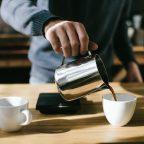
Erythritol, a Common Sweetener, Linked to Potential Heart Attacks
Introduction
This article explores the latest study on erythritol, a low-calorie sweetener, and its potential benefits and drawbacks for cardiovascular health.
Unlike other sugar alcohols, such as sorbitol and xylitol, erythritol doesn’t cause digestive issues in most people because it is absorbed into the bloodstream before reaching the large intestine.
This property, along with its low calorie count, has made erythritol a popular alternative to sugar, especially among people with diabetes or those who are trying to lose weight.
However, there have been concerns about its effects on the heart. Some studies have suggested that erythritol may increase the risk of heart attacks.
In this article, we will explore the link between erythritol and heart attacks and determine whether this is a cause for concern.
How is Erythritol Produced?
Erythritol is produced by fermenting glucose with a yeast called Moniliella pollinis. The yeast converts the glucose into erythritol through a process called reduction, which removes oxygen from the glucose molecule.
It is also worth noting that some manufacturers may use a process called hydrogenation to produce erythritol, which can result in the production of small amounts of trans fats. Consumers should always check the ingredients of erythritol products to ensure that they are not consuming trans fats.
B. Explanation of the link between Erythritol and heart attack
Common Uses of Erythritol
Some products that commonly contain erythritol include:
- Sugar-Free Gum – Erythritol is commonly used in sugar-free gum as a sweetener that doesn’t negatively impact dental health.
- Baked Goods – Erythritol can be used in baked goods as a sugar substitute without affecting texture or taste.
- Desserts – Erythritol can be used in a wide range of desserts such as ice creams and puddings as a low-calorie alternative to sugar.
Erythritol has gained popularity as a low-calorie sweetener due to its ability to provide sweetness without adding calories or negatively affecting dental health or blood sugar levels. It has 70% of the sweetness of sugar but only 6% of the calories.
Erythritol and Heart Attacks: What’s the Link?
There have been concerns that erythritol may increase the risk of heart attacks. One study published in the Journal of the American Heart Association found that rats fed high doses of erythritol had an increased risk of heart attacks.
The researchers suggested that erythritol may increase levels of a harmful molecule called fructose-1,6-bisphosphate (FBP). FBP can cause inflammation and damage to the blood vessels, which can increase the risk of heart attacks.
Another study published in the Journal of Medicinal Food found that erythritol may have negative effects on cholesterol levels. The study found that rats fed a high-fat diet supplemented with erythritol had higher levels of LDL (bad) cholesterol and lower levels of HDL (good) cholesterol compared to the control group.
However, it is important to note that these studies were conducted on rats and not humans. Further research is needed to determine the effects of erythritol on the human heart.
Is Erythritol Safe?
The FDA has deemed erythritol to be safe for consumption. It has been given the status of Generally Recognized As Safe (GRAS), which means that it is a safe food additive that does not require pre-market approval from the FDA.
Numerous studies conducted on humans have found that erythritol is safe for consumption. It does not have any known side effects, and it is not metabolized by the body in the same way as sugar, which means that it does not raise blood sugar levels.
How to Use Erythritol Safely and Effectively
If you choose to use erythritol as a sugar substitute, it’s essential to do so responsibly. Here are some tips to help you use erythritol safely and effectively:
- Start slowly: If you’ve never consumed erythritol before, start with small amounts and gradually increase to see how your body reacts.
- Choose high-quality products: Look for erythritol products that are free of additives and other unhealthy ingredients.
- Consider your overall diet: While erythritol may be a healthier alternative to sugar, it’s still important to maintain a balanced diet that includes plenty of whole foods, such as fruits, vegetables, whole grains, and lean proteins.
- Consult your healthcare provider: If you have any health concerns or take medications that may interact with erythritol, talk to your healthcare provider before using it as a sugar substitute.
Alternatives to Erythritol
Luckily, there are a variety of alternatives to erythritol that can be used in its place.
1. Stevia
- Stevia is a natural sweetener that comes from the leaves of the stevia plant. It is calorie-free and does not raise blood sugar levels, making it a great alternative to erythritol for people with diabetes or those looking to cut calories. Stevia can be used in a variety of ways, including in baking and as a sweetener for drinks.
2. Xylitol
- Xylitol is a sugar alcohol that is commonly used as a sweetener. It is similar in taste and texture to sugar, but has fewer calories and is less likely to cause digestive issues. Xylitol is also believed to have dental benefits, as it can help prevent tooth decay. However, it is important to note that xylitol can be toxic to dogs, so it should be kept away from pets.
3. Allulose
- Allulose is a relatively new low-calorie sweetener that is gaining popularity. It is similar in taste and texture to sugar, but has significantly fewer calories and does not raise blood sugar levels. Allulose can be used in baking and cooking, but its low melting point makes it unsuitable for some applications.
4. Monk Fruit
- Monk fruit is a natural sweetener that comes from the monk fruit plant. It is calorie-free and does not raise blood sugar levels, making it a great alternative to erythritol for people with diabetes or those looking to cut calories. Monk fruit extract is commonly used in packaged foods and drinks, but it can also be bought as a sweetener for home use.
Tips for Reducing Intake of Erythritol
1. Read Labels Carefully
One of the easiest ways to reduce your intake of erythritol is to carefully read the labels of the foods and drinks you consume. Many products contain erythritol, even those that are not marketed as low-sugar or low-calorie options. By reading the ingredient list, you can identify which products to avoid or limit.
2. Cook from Scratch
Another way to reduce the amount of erythritol you consume is to cook from scratch. Many pre-packaged foods and snacks contain erythritol, but when you cook your own meals, you have control over the ingredients you use. You can choose to use natural sweeteners, like honey or maple syrup, instead of erythritol.
3. Choose Foods Low in Erythritol
When shopping for food, choose products that contain little to no erythritol. Opt for fresh fruits and vegetables, lean meats, and whole grains. These foods are naturally low in erythritol and can provide the essential vitamins and minerals that your body needs.
4. Limit Intake of Sugar-Free Products
Sugar-free products are a great alternative for those looking to reduce their sugar intake, but they often contain erythritol as a substitute. To reduce your intake of erythritol, try limiting your consumption of sugar-free products or finding alternatives that do not contain the sugar substitute.
Conclusion
In conclusion, it’s clear that the link between erythritol and heart attacks requires more research to fully understand its impact. However, by using erythritol safely and effectively, as well as exploring alternatives and reducing intake when necessary, we can still enjoy the benefits of this sugar substitute without any negative health consequences. So let’s continue to educate ourselves on this topic and make informed decisions to keep our hearts healthy and happy!
FAQ
Does erythritol raise blood sugar levels?
- No, erythritol does not raise blood sugar levels. Unlike sugar, erythritol is a sugar alcohol that is not metabolized by the body and does not affect insulin levels.
Can erythritol cause digestive issues?
- Erythritol can cause digestive issues in some people, especially when consumed in large amounts. However, studies have shown that erythritol is generally well-tolerated and less likely to cause digestive issues than other sugar alcohols.
Does erythritol have any calories?
- Erythritol has very few calories, with only 0.2 calories per gram compared to sugar’s 4 calories per gram.
Can erythritol be used in baking?
- Yes, erythritol can be used in baking as a substitute for sugar. However, it is important to note that erythritol does not have the same properties as sugar and may not work as well in some recipes.
Is erythritol safe for pets?
- Erythritol can be toxic to pets, especially dogs, and should not be consumed by them.
How does erythritol compare to other artificial sweeteners?
- Erythritol is generally considered to be a safer and healthier alternative to other artificial sweeteners, such as aspartame and saccharin, which have been linked to various health concerns.

